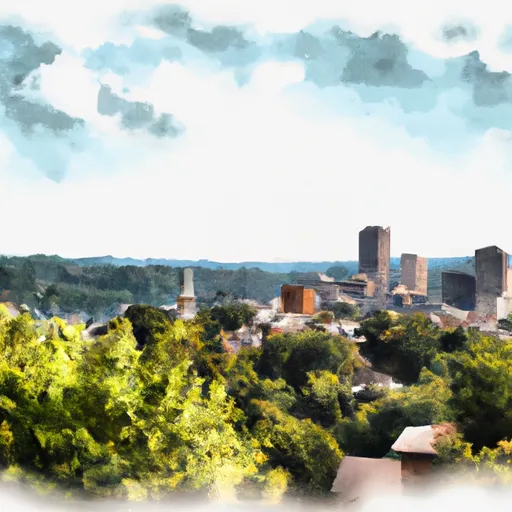-
 Snoflo Premium
Snoflo Premium
Get unlimited access to all our content
With no Ad interruptions! - Start Your Free Trial Login with existing account
Karns
Eden Index
Climate
7.9
•
Recreation
3.1
•
Community
2.0
•
Safeguard
4.7/10

Located in Knox County, Tennessee, Karns is a small suburban community with a population of approximately 10,000 residents. The climate in Karns is characterized by warm summers and mild winters. Summers are typically hot and humid, with temperatures ranging from the mid-80s to low 90s Fahrenheit. Winters are relatively mild, with temperatures hovering around the mid-40s to low 50s. The area experiences moderate rainfall throughout the year.
When it comes to hydrology constituents, Karns benefits from its proximity to the Clinch River, which is known for its scenic beauty and recreational opportunities. The river offers fishing opportunities for anglers, particularly for smallmouth bass, catfish, and trout. Boating, kayaking, and canoeing enthusiasts can also enjoy the calm waters of the river.
In addition to the Clinch River, Karns is surrounded by several lush green parks and nature reserves, providing residents and visitors with ample opportunities for outdoor activities. Some of these include hiking, biking, picnicking, and wildlife viewing. Notable parks in the area include the Karns Community Park, Admiral Farragut Park, and the Oak Ridge Reservation.
With its pleasant climate, scenic river, and abundant outdoor recreation opportunities, Karns, Tennessee, offers a charming and nature-rich environment for residents and visitors alike.
What is the Eden Index?
The Snoflo Eden Index serves as a comprehensive rating system for regions, evaluating their desirability through a holistic assessment of climate health, outdoor recreation opportunities, and natural disaster risk, acknowledging the profound impact of these factors on livability and well-being.
Climate Health Indicator (CHI): 7.9
Karns receives approximately
1284mm of rain per year,
with humidity levels near 84%
and air temperatures averaging around
15°C.
Karns has a plant hardyness factor of
7, meaning
plants and agriculture in this region tend to thrive during the non-winter months.
By considering the ideal temperature range, reliable water supplies, clean air, and stable seasonal rain or snowpacks, the Climate Health Indicator (CHI) underscores the significance of a healthy climate as the foundation for quality living.
A healthy climate is paramount for ensuring a high quality of life and livability in a region, fostering both physical well-being and environmental harmony. This can be characterized by ideal temperatures, reliable access to water supplies, clean air, and consistent seasonal rain or snowpacks.
Weather Forecast
Streamflow Conditions
Upper Tennessee
Area Rivers
Upper Tennessee
Snowpack Depths
Upper Tennessee
Reservoir Storage Capacity
Upper Tennessee
Groundwater Levels
Recreational Opportunity Index (ROI): 3.1
The Recreational Opportunity Index (ROI) recognizes the value of outdoor recreational options, such as parks, hiking trails, camping sites, and fishing spots, while acknowledging that climate plays a pivotal role in ensuring the comfort and consistency of these experiences.
Access to outdoor recreational opportunities, encompassing activities such as parks, hiking, camping, and fishing, is crucial for overall well-being, and the climate plays a pivotal role in enabling and enhancing these experiences, ensuring that individuals can engage in nature-based activities comfortably and consistently.
Camping Areas
| Campground | Campsites | Reservations | Toilets | Showers | Elevation |
|---|---|---|---|---|---|
| Chestnut Ridge - Lake Lanier | None | 1,108 ft | |||
| River Forks - Lake Lanier | 73 | 1,123 ft | |||
| Shoal Creek - Lake Lanier | None | 1,117 ft | |||
| James Shackleford County Park | None | 904 ft | |||
| Bald Ridge Creek | None | 1,097 ft | |||
| War Hill - Lake Lanier | 14 | 1,132 ft | |||
| Sawnee | None | 1,070 ft | |||
| Old Federal - Lake Lanier | None | 1,108 ft | |||
| Shady Grove - Lake Lanier | None | 1,113 ft | |||
| Charleston - Lake Lanier | None | 1,185 ft |
Nearby Ski Areas
Catastrophe Safeguard Index (CSI):
The Catastrophe Safeguard Index (CSI) recognizes that natural disaster risk, encompassing floods, fires, hurricanes, and tornadoes, can drastically affect safety and the overall appeal of an area.
The level of natural disaster risk in a region significantly affects safety and the overall livability, with climate change amplifying these risks by potentially increasing the frequency and intensity of events like floods, fires, hurricanes, and tornadoes, thereby posing substantial challenges to community resilience and well-being.
Community Resilience Indicator (CRI): 2.0
The Community Resilience Indicator (CRI) recognizes that education, healthcare, and socioeconomics are crucial to the well-being of a region. The CRI acknowledges the profound impact of these elements on residents' overall quality of life. By evaluating educational resources, healthcare accessibility, and economic inclusivity, the index captures the essential aspects that contribute to a thriving community, fostering resident satisfaction, equity, and social cohesion.

